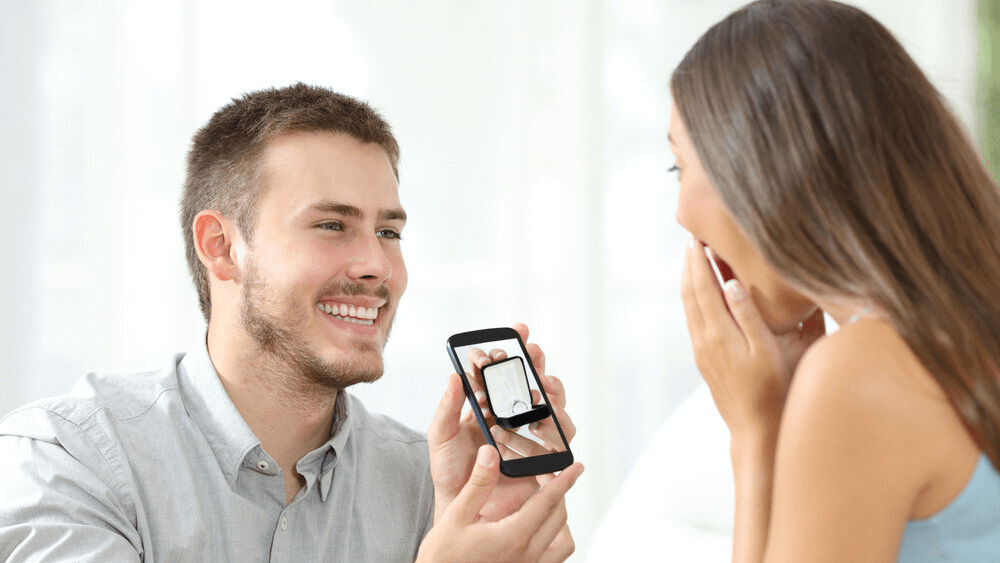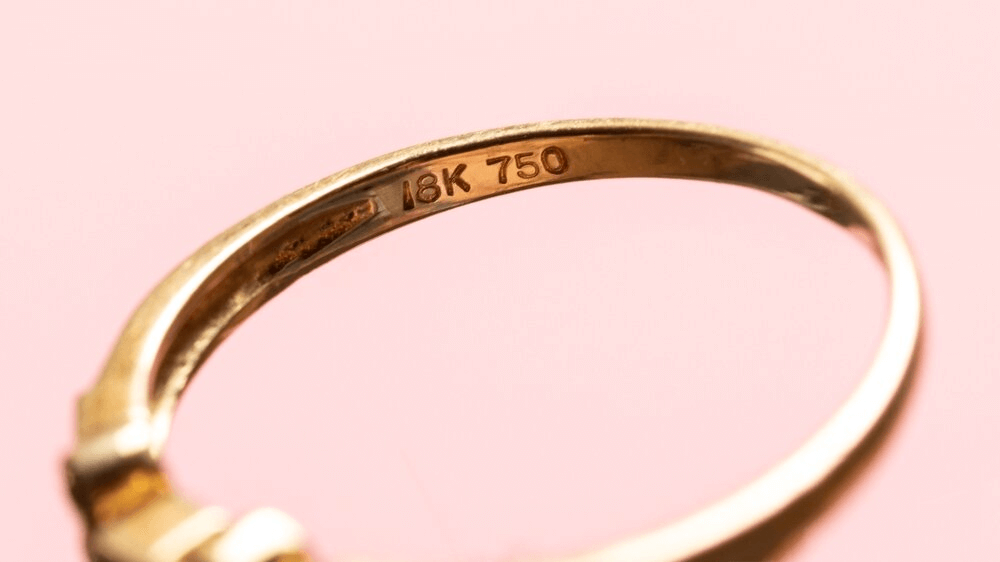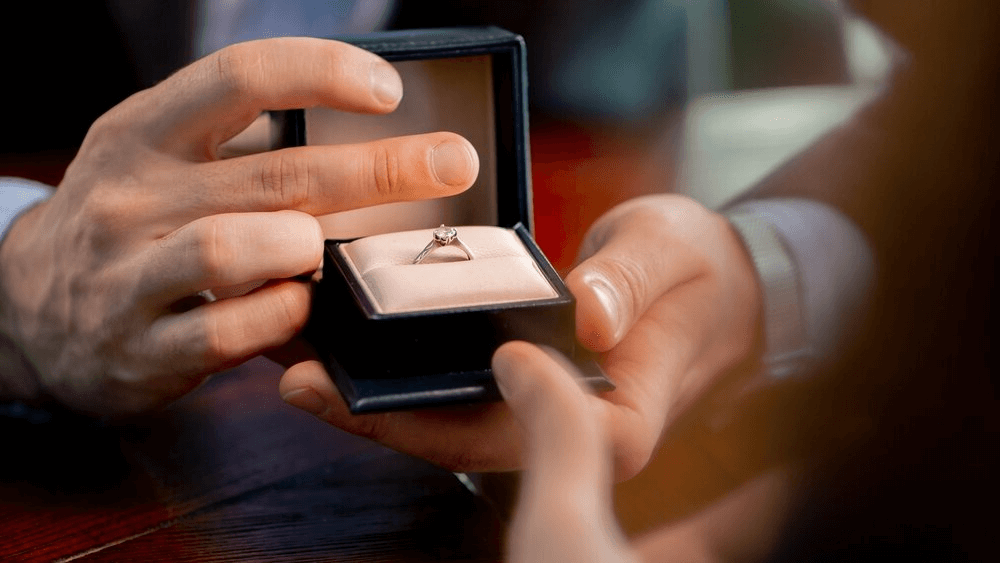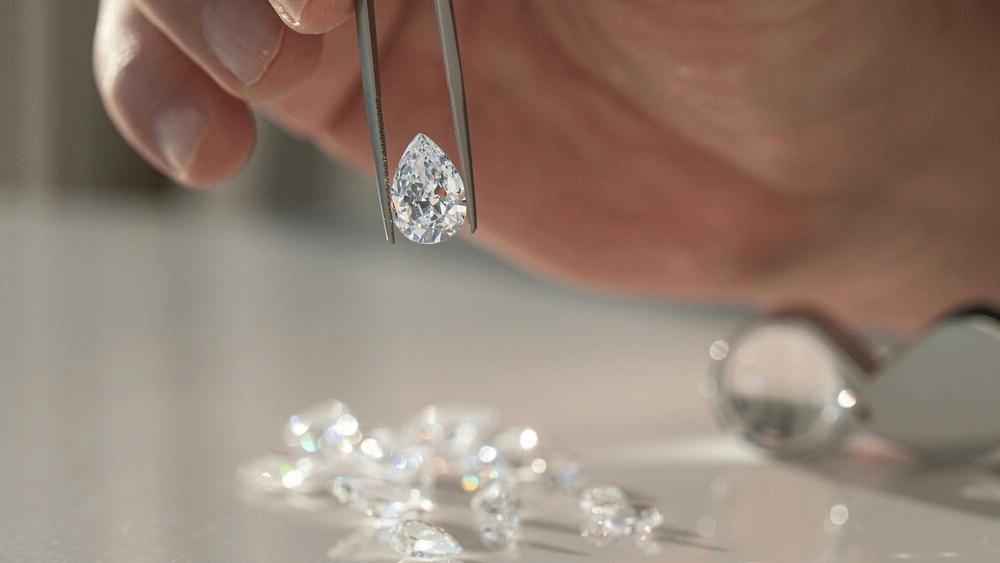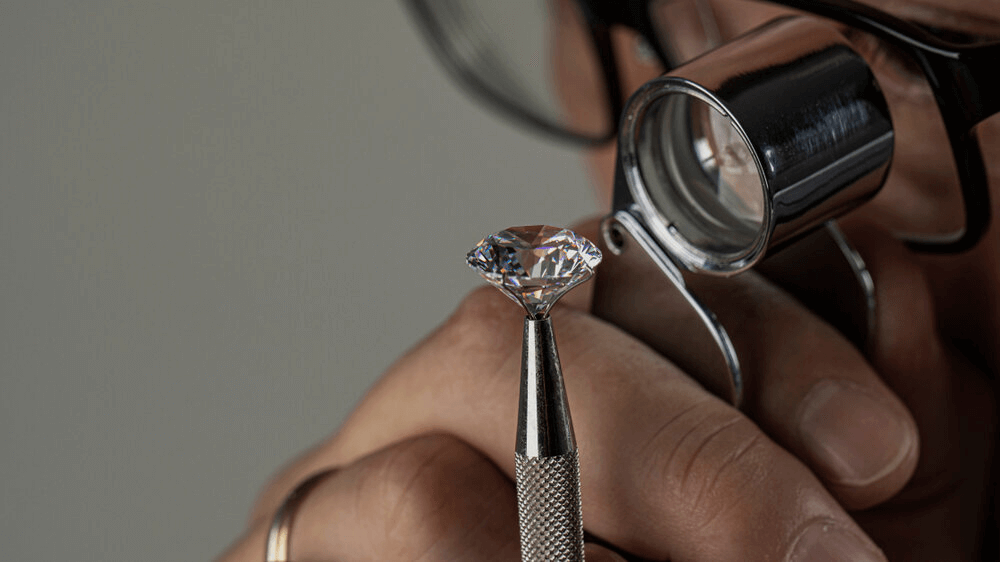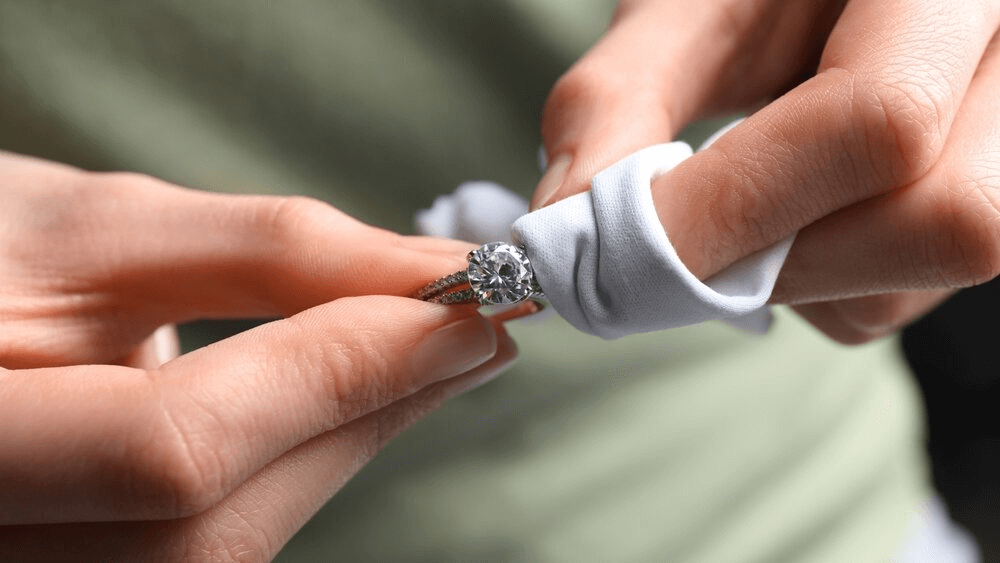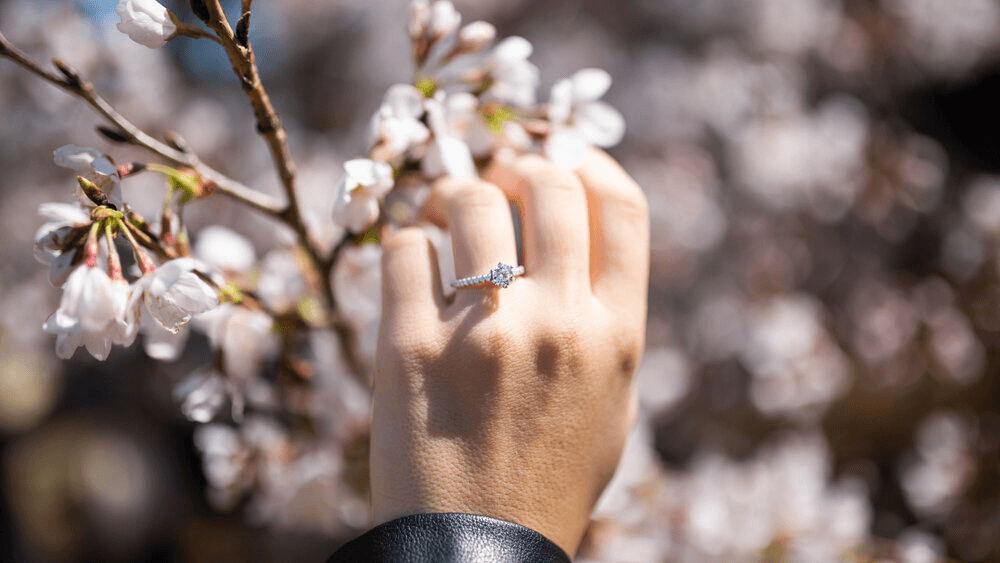The Secret Insider’s Guide to Choosing the Perfect Engagement Ring

By Gary A.

Edited by Olivia H.
Published Aug 21, 2021
Edited on Dec 18, 2024
When it comes to how to buy an engagement ring, finding the perfect balance between beauty, quality, and budget is key – but are you ready to uncover the secret to getting it just right?

Navigate This Guide:
- 11 Quick Tips to Understanding Diamond Engagement Rings
- Introduction
- The Ultimate Engagement Ring Buying Guide
- Deep Dive Into Diamonds
- Engagement Ring Basics
- Choosing the Right Store for Ethical and Reliable Diamond Selection
- Our Expert Take
- 6 FAQs
Before we dive deeper into the specifics, here are some practical tips to help guide your decision-making process:
11 Quick Tips to Understanding Diamond Engagement Rings
- Tip 1: Choose a Complementary Style: Select a setting that complements the wearer’s lifestyle and personal style. For instance, a minimalistic setting suits a more active lifestyle, while intricate designs cater to a preference for elegance.
- Tip 2: Consider the Security of the Stone: Ensure the setting securely holds the diamond. Prong settings are popular, but more prongs typically offer better security. Bezel settings encircle the stone and are ideal for protecting edges.
- Tip 3: Match the Setting with the Diamond Shape: Different settings suit different diamond shapes. For example, a halo setting enhances the size and brilliance of the center stone, while a solitaire setting showcases a classic, timeless appeal.
- Tip 4: Think About Future Resizing: Some settings are easier to resize than others. A simple band is easier to alter compared to one with diamonds set all around it.
- Tip 5: Reflect on Maintenance Needs: Some settings require more upkeep. Intricate designs with multiple stones may need more frequent cleaning and inspections to maintain their beauty.
- Tip 6: Consider the 4 Cs: When examining diamond engagement rings, the 4 Cs (Cut, Clarity, Color, and Carat) are crucial. Each aspect influences the diamond’s beauty and value. A well-cut diamond will have more brilliance, and clarity refers to the absence of internal flaws. Color grading affects the diamond’s appearance, while carat size determines its weight.
- Tip 7: Examine the Setting and Metal: The setting and metal of the ring play a significant role in its overall look and durability. Popular metals include gold (white, yellow, or rose), platinum, and palladium. The setting should secure the diamond firmly and complement its shape.
- Tip 8: Understand Certification and Grading: Ensure the diamond comes with a certification from a reputable grading entity like the GIA or AGS. This certification provides an unbiased assessment of the diamond’s qualities and authenticity.
- Tip 9: Check for Fluorescence Diamond: fluorescence can affect its appearance under different lighting conditions. Some fluorescence can make diamonds appear whiter, but strong fluorescence might give off a blue tint in sunlight.
- Tip 10: Compare Similar Diamonds: Viewing multiple diamonds with similar characteristics can help in understanding the subtle differences and choosing the best one for your preferences and budget.
- Tip 11: Inspect the Diamond Under Different Lighting: Observe the diamond under various lighting conditions, including natural light, to get a sense of its true appearance, brilliance, and any potential flaws.
Now that you’ve got these practical tips, use Jeweler AI below to find the perfect engagement ring that suits your style and budget:
Introduction
You can put aside Cupid’s arrow, pocket those handfuls of rose petals, pack away the fireworks and send the string quartet home for the time being – although, let’s face it, the string quartet might be a bit much – because buying an engagement ring is serious, and occasionally stressful, business.
That said, it doesn’t need to be half as stressful as some guys make it out to be. Provided you know your stuff when it comes to diamonds – by the way, you might as well get used to hearing the phrase ‘the four Cs’ right now – settings, your budget, and being a little secretive (all for a good cause), it’s a process you’ll sail through.
We’re all about preparing you for that moment when you click “purchase”, but remember that, before you get to that moment, you need to have a basic idea of what you want. This is why we’re here. On our side, we can give the theoretical knowledge about engagement rings, whilst – on your side – you have the unique knowledge about your partner and their own individual tastes. Together, we can merge both of these things to shape your choice and find the best possible option.
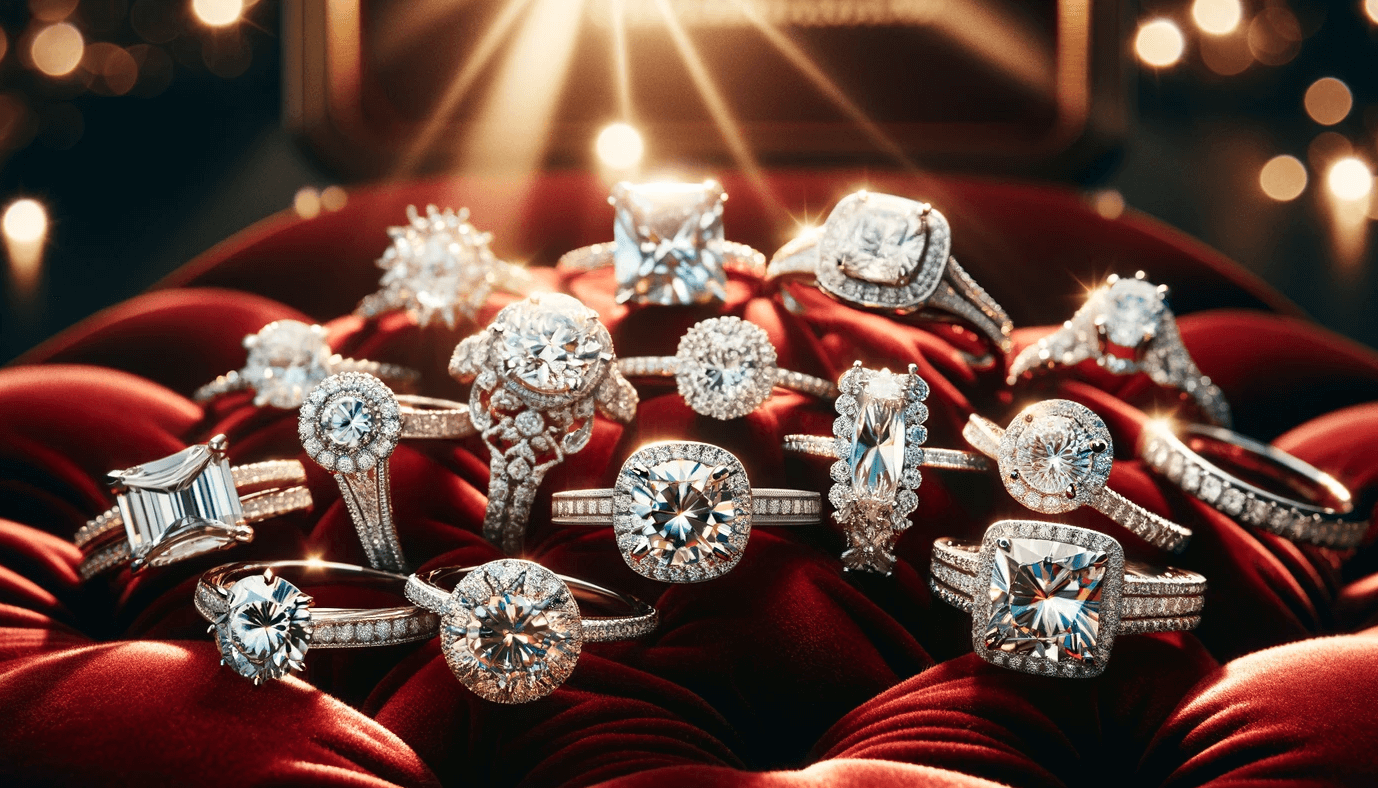
The Ultimate Engagement Ring Buying Guide
An official GIA Report, a price that is suitable to the diamond’s quality as described within that report, a beautiful cut and sparkle…and something we can’t quite put into words. Here’s everything you need to know about buying an engagement ring.
Ideal Time for Purchasing
When you feel ready. Some people will decide to purchase as soon as they’ve got their heads around the basics of diamonds and ring settings, while others will spend far longer to settle upon a design before clicking “buy”.
You don’t need us to tell you whether or not it’s time to propose, but we can give you plenty more information if you’re still feeling a little lost over settings, diamond shapes, customization, or metal.
Everyone is different and, for some, jumping in at the deep end with only a vague idea for the final product is ideal. For the rest of us, working methodically through each stage in the process is the best possible approach.
Online Buying Strategies
There’s no getting around it: online options are quicker, cheaper, and simpler to use these days, but the only way to make the process as smooth and simple as possible is to choose a reputable online jeweler that specialises in high standards, educate yourself, understand why some diamonds are considered so much more valuable than others of a similar size and shape, and work out where your budget places you with regards to that long spectrum of quality.
That’s exactly why we check each and every diamond that comes through our doors. This sets us apart from a lot of online retailers, who tend to buy-up diamonds in bulk without much attention to detail.
Our resident diamond experts have quality and visual beauty on their minds every time they inspect any diamond that comes through our doors. We know what our customers want, and steer clear of any diamond that won’t meet their expectations.
Deep Dive Into Diamonds
Know your ABCs – or, in this case, just the Cs – of diamonds, and the entire process of buying an engagement ring will suddenly look a lot less daunting, and a lot more enjoyable.
Selecting the Perfect Diamond
From the traditional Round, Oval and Marquise cuts to the more fashionable Pear, the mesmerizing Emerald and Asscher, and the coveted Princess, there’s a massive array for you to choose from. You can read more about the Best Engagement Rings for Any Style, and browse through a few options here.
Provided you have those keywords in your head – and can sum up your partner’s tastes as accurately as possible – you will be best placed to find the shapes that are more suitable for your bride-to-be based on her style.
Figuring Out the Four Cs
You need to know the Four Cs in order to make an informed and savvy investment into the most expensive part of your engagement ring: the diamond.
The history of the four Cs stems back to the 1940s when the founder of the Gemological Institute of America (GIA) realized the need for a formal and concise method for identifying the value of any diamond passing through a collector or jeweler’s establishment.
It provides a quick and easy frame of reference – one that is invaluable to those of us who, in other circumstances, would probably look at a row of diamonds and assume they were all identical. Looking at the diamonds GIA certificate – or, more specifically, those four grades – will mean you can get the very most in quality out of your investment.
In essence, when venturing out into the world of diamond engagement rings, the decisions you’ll need to make are endless and the stress and anxiety can quickly take over. With the Four Cs to refer back to whenever you need a little grounding, you’ll find everything much simpler.
Considering Color, Clarity, and Cut
Together, these four elements offer an easy way of conveying any diamond’s quality and value: color, clarity, cut and carat (weight). Learning how to balance the 4Cs when shopping for a diamond engagement ring will allow you to save money while not compromising on her dream ring.
The name of this diamond, for instance, may look like a coded message at first, but, once you learn how to interpret the different letters and numbers in its name, it will get much, much easier for you to know which ones could make good investments, and which ones should be passed over.
From the title alone, we can learn about all four of the diamond’s Cs, and understand that this Emerald diamond is a large, 3.02 carat diamond with a G grade color and very slight inclusions. But how?
- Color
Best to Worst: D, E, F … X, Y, Z
Yes, even if you know you’re looking for a clear diamond, color remains an important factor.
Clear diamonds (that is, diamonds without any colorful hue like red, blue, or green) range from the crystal clear – that is, a grade D – to those with a distinctly yellow stain to them. As you might have guessed, this yellowish coloration is not considered desirable, and will drastically alter the diamond’s value on the market.
It’s highly unlikely you’ll notice the difference between a D grade diamond and an E grade diamond, or even an F grade diamond. Once you get to around an H, however, the yellow tint starts to become noticeable, so it’s not a good idea to go below this.
- Clarity
Best to Worst: FL, IF, VVS1 and VVS2, VS1 and VS2, SI1 and SI2, I1, I2, and I3
All diamonds have inclusions (internal flaws), but some aren’t noticeable without extreme magnification. If this is the case, the diamond will be labeled FL or IF (Flawless or Internally Flawless).
For the 99.99%, however, the diamond’s inclusions will be mapped out – a little like a cop taking fingerprints – and this will significantly impact the diamond’s value.
Very Very Slight (VVS) inclusions and even some Very Slight (VS) inclusions will hardly be noticeable to the naked eye. This is known as ‘eye cleanliness’, and the sign of an excellent diamond. A Slightly Included (SI) or Included (I) diamond will be much more affordable but will have some imperfections visible to the naked eye.
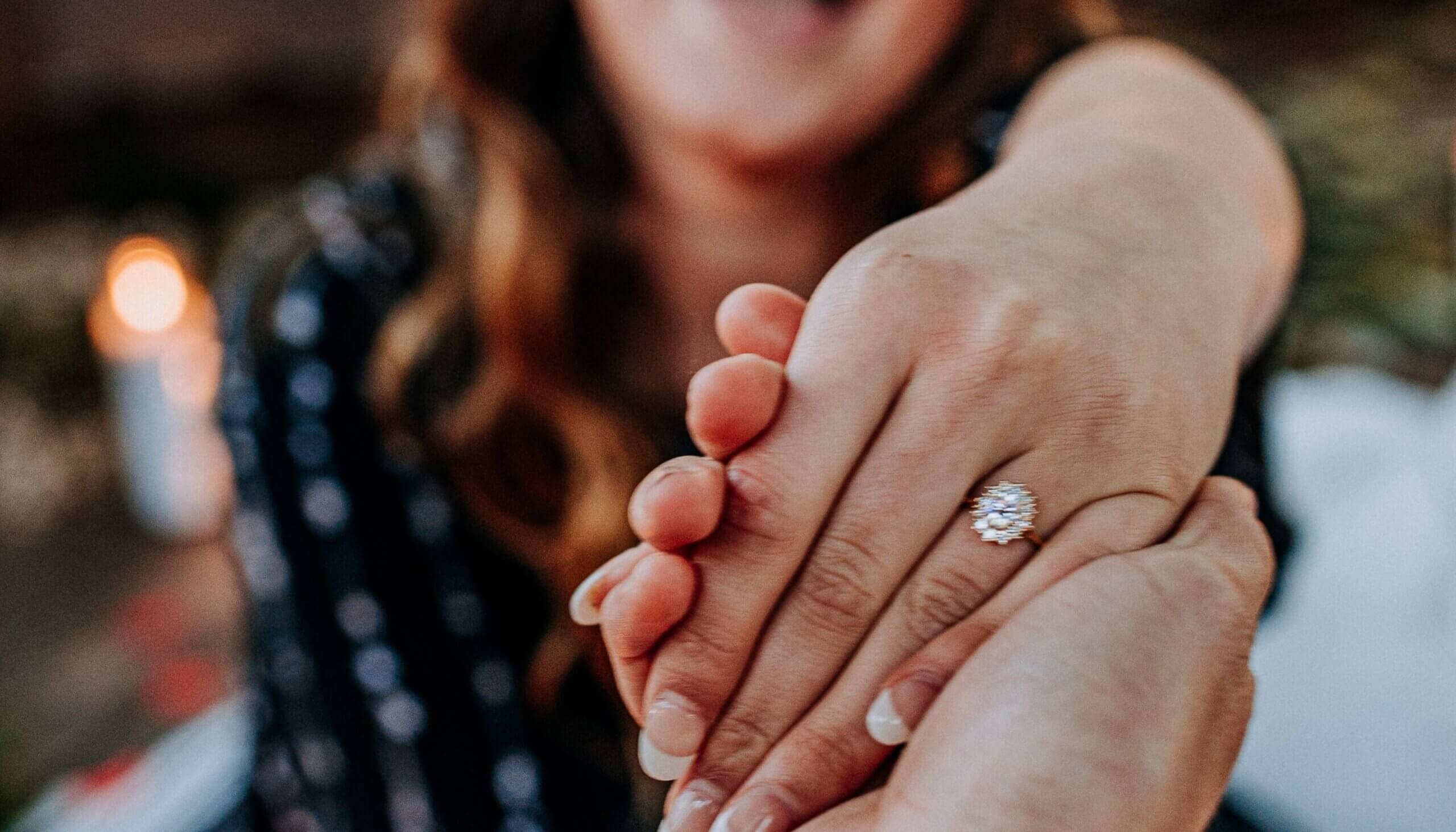
- Cut
Best to Worst: EX, VG, G, F, and P
These abbreviations stand for Excellent, Very Good, Good, Fair and Poor, and they identify how well a diamond has been cut into shape.
Diamond cutting is a complex process and, while the subtle differences in quality are likely invisible to non-experts, this is yet another factor that significantly impacts a diamond’s value.
Carat Size and Quality
You can shop diamonds from one-hundredth of a carat to thousands of carats – but only one carat weight will be perfect for you, your budget, and your vision.
Diamonds are pretty light. One Carat is equal to 0.2 grams, so you don’t need to worry about weighing your bride-to-be’s hand down with something that weighs as much as a small bolder.
Diamond rings tend to use diamonds no smaller than 0.75 carats, and the average engagement ring features a diamond around one carat in size, if that helps put things into perspective – although many modern brides are looking for a diamond over one carat, to really send a message.
Understanding Brilliance and Fire
While both are terms used when discussing a diamond’s sparkle, brilliance refers only to the bright flashes of white light made by the gemstone, while fire refers to the colored flashes.
All diamonds sparkle, and the combination of fire and brilliance is often referred to as the diamond’s light performance.
Again, why do you need to know this? Because these are phrases that would otherwise go right over your head, in spite of the fact that they tell you something very important about the diamond. If you’re hoping to get a diamond with that bright, star-like sparkle, you’ll want to focus your search on cuts that achieve more brilliance than fire – for instance, the Round cut.
Engagement Ring Basics
With the four C’s under your belt, the next line of reassurance we can offer you is this: the entire process of buying an engagement ring can be broken down into manageable stages. Not only that, but the entire process will run much more smoothly if you break it down, first.
Budgeting for Your Ring
You’ve most likely heard that you should spend two or three months of your salary on an engagement ring. Well, guess what? That’s a clever marketing ploy – although it can provide a handy frame of reference if you need one.
You can spend however much or little on a ring as you like. What’s most important is that you look at your budget, figure out what you can afford, and get educated on where the bulk of your money should go, and where it’s worth economizing. The rules are the same whether you’re browsing through a selection of diamonds with $3,000 or $30,000.
The most important thing to remember? Don’t start looking for a diamond without a definitive number in your head.
Exploring Design and Style
The second step in creating your partner’s dream ring is working out who she is.
Now, obviously, you know who your girlfriend is – or, at least, we hope so. Still, knowing someone like the back of your hand doesn’t necessarily mean that you can instantly break their style down into a few keywords – although having those keywords will be invaluable as you progress.
Is the jewelry in her jewelry box flashy or a little simpler? Are her favorite rings modern-looking with clean lines, or ornate with a vintage vibe? Also, take note of the metals she leans toward – are her existing pieces mostly made of white or yellow gold?
If she doesn’t wear that much jewelry, take a look at her closet and you’ll get a good idea of what would suit her. Is her style gracefully understated, or super ‘out there’?
There are many, many different types of ring settings out there, and you’ll need to consider two different factors when running through your options:
- Your girlfriend’s style (again)
- How each setting will look with your chosen diamond shape
Some ring settings are simple and chic, while others are more intricate, or more modern, or more traditional – and this is where knowing your girlfriend’s style will prove invaluable once again.
What’s more, some settings will impact your diamond’s innate sparkle more than others, so brush up on your knowledge and dedicate plenty of time to balancing the pros and cons of your list of ‘Maybes’.
Obviously, a person with a more active lifestyle probably won’t want a ring that sticks out too much, in which case you might want to look into a bezel or flush setting. Of course, your diamond is the focus, but how it’s set in the ring is a high priority.

Choosing the Right Metal For Your Diamond Engagement Ring
Your four main choices when it comes to the metal in your setting are platinum, white gold, yellow gold, and rose gold.
Platinum is probably going to work out to be the most expensive choice. While this metal is less expensive than gold, it can be used at a much higher purity, meaning more of it is required to make a ring. It’s incredibly popular for engagement rings not just because it’s highly durable, but also because it shines incredibly bright, and adds extra shine and sparkle to a beautiful diamond.
Gold, however, has a certain allure that humans haven’t been able to resist for thousands of years. Its warm, rich hue offers a stunning contrast to a clear diamond, whether you opt for yellow or rose gold, while the coolness of white gold offers the perfect alternative to platinum if you’re on a tighter budget.
Gold can slightly impact the coloration of a diamond, but many wearers appreciate this as part of the ring’s charm.
Sizing the Ring
It sounds obvious, but we have to say it anyway: don’t attempt to guess your girlfriend’s ring size.
If she already wears a ring on her ring finger, then you’re in luck. If not, you might have to get some help from her girlfriends or mom – or, if you’re brave enough, take a measurement while she’s napping.
Either way, make sure you find out her ring size ahead of time.
Personalize Your Ring
It’s easy to make a ring even more special. For instance, small customizations like an engraving on the inside of the shank (band) go a long way toward making something unique, so think of something that only she will understand to make it your own.
We can’t offer much help beyond this point. Once you finally have that diamond ring in your pocket, hidden way up high on top of the cabinets, or tucked away in the very back of your sock drawer, the rest really is up to you.
Choosing the Right Store for Ethical and Reliable Diamond Selection
Willyou.com offers ethical sourcing, maximum light performance, clarity, precise standards and extra sourcing efforts.
The diamonds are not only beautiful but also of the highest quality. This is what we mean when we ask you to find a trustworthy store.There are many out there that might offer low prices and “good deals”, but they will always be sacrificing something in the quality. Don’t make the mistake of thinking that beautiful diamonds will be available at rock-bottom prices; understand what contributes to value, and what detracts from value, and give your diamond search the best chances for success.
Our Expert Take
Choosing the right engagement ring is a journey that combines personal taste, financial planning, and an understanding of gemological elements. With Jeweler AI, we’ve guided you through the nuances from the initial decision-making to selecting the perfect metal and setting. Remember, an engagement ring is more than a piece of jewelry; it’s a testament to your relationship and an heirloom for future generations.
Whether you decide on a vibrant halo setting or a classic solitaire, ensure it reflects the personality and style of your loved one. As you prepare to make this significant investment, take comfort in knowing that each choice leads to that unforgettable moment of “Yes.”
6 FAQs
- Q: What exactly is an engagement ring?
- A: An engagement ring is a symbol of commitment, traditionally given during a marriage proposal. It usually features a diamond or other precious gemstone.
- Q: Are engagement rings and wedding rings the same?
- A: No, they are different. Engagement rings are given at the proposal, while wedding rings are exchanged during the wedding ceremony.
- Q: Do engagement rings have to be diamond?
- A: While diamonds are traditional, engagement rings can feature any gemstone or even be a simple band.
- Q: Which hand and finger is the engagement ring worn on?
- A: In many Western cultures, the engagement ring is worn on the fourth finger of the left hand.
- Q: Can engagement rings be resized?
- A: Yes, most engagement rings can be resized, but the ease of resizing depends on the ring’s design and material.
- Q: How much should you spend on an engagement ring?
- A: There’s no set rule; it depends on personal budget and preference. The traditional guideline of two months’ salary is often considered outdated.
Explore the world of engagement rings with Jeweler AI and find your perfect match. Discover how elegance and choice meet in every diamond selection.
FOLLOW-UP GUIDE SERIES





